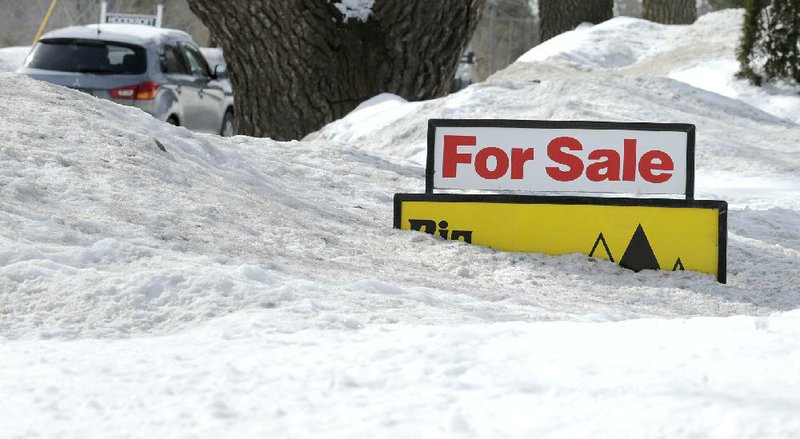WASHINGTON -- Slightly more Americans bought homes in February, but tight inventories, affordability problems and nasty winter weather point to sluggish sales in the coming few months.
Sales of previously owned homes rose 1.2 percent last month to a seasonally adjusted annual rate of 4.88 million, rebounding slightly after plunging in January yet still underperforming by historical standards, the National Association of Realtors said Monday.
The real estate market has hibernated through the first two months of 2015, creating the potential for a second straight year of weak sales.
Strong job growth and relatively low mortgage rates have failed to awaken buyers. Meanwhile, relatively few homes are being listed for sale and builders are mostly catering to the wealthiest slivers of the market. Sales are running below last year's pace of 4.93 million, which represented a 3.1 percent drop from 2013.
"The next couple months are some of the most critical of the entire year for housing, and sluggish numbers may continue if inventory doesn't increase," said Bill Banfield, vice president of mortgage provider Quicken Loans.
Despite February's uptick, buying activity appears to have been slow coming into March because of a series of winter storms. The weather last month shut down construction and hurt open houses, likely causing fewer signed contracts and putting additional downward pressure on completed sales in March.
"Mother Nature will probably make her presence known more in March," said Jennifer Lee, a senior economist at BMO Capital Markets.
Housing starts plunged 17 percent in February, the Commerce Department reported last week. Buyer traffic also slipped last month, according to the National Association of Home Builders/Wells Fargo index. Mortgage applications slipped in March, according to the Mortgage Bankers Association.
Sales tumbled 6.5 percent last month in the Northeast, which was hammered by snow, the Realtors association said. Home-buying was unchanged in the Midwest and increased in the South and West.
The recent storms have led several economists to expect a strong recovery in the coming spring months, when more buyers usually step up their search and sellers decide to list their properties.
Still, some homeowners are trapped by mortgage debt, making it unprofitable for them to sell. Their lack of equity is a lingering aftershock from the recession and housing bust, limiting the supply of available homes on the market.
The real estate data firm Zillow reported last week that 16.9 percent of homeowners owe more on their mortgages than their homes are worth. In several metro areas including Philadelphia, Houston and Boston, that rate actually increased from the levels in the third quarter of 2014.
The Realtors reported Monday that just 4.6 months of supply was listed for sale, compared with a full five months a year ago.
That meager inventory has helped push up sales prices, creating additional affordability pressures despite strong monthly job gains averaging more than 200,000 for the past year.
"Still-low inventories continue to play a role in the flattish trend of home sales," Lee said in a research note. "Rising incomes, albeit at a subdued pace, still-low borrowing costs and job creation remain the pillars supporting a stronger U.S. housing market."
Median home prices increased 7.5 percent over the past 12 months to $202,600, almost quadruple the pace of average hourly wage gains.
"It's all about inventory," Lawrence Yun, National Association of Realtors chief economist, told reporters as the figures were released. "If we had more inventory, it would restrain price growth."
Sales to investors and all-cash sales have also declined over the past year, while first-time buyers have yet to return. First-timers accounted for only 29 percent of home sales, compared with a historical average of 40 percent.
Nor have buyers responded much to the comparatively low mortgage rates.
Average 30-year fixed rates were 3.78 percent last week, according to the mortgage giant Freddie Mac, the Federal Home Loan Mortgage Corp. That average has plunged from a 52-week high of 4.41 percent, which should help to make housing more affordable.
Because of tight credit, few potential buyers have been able to take advantage of the low rates.
An Urban Institute index measuring credit availability found that lenders are taking fewer risks with mortgages, choosing buyers with high credit scores and providing them routine mortgages, rather than the exotic and opaque loans that inflated the housing bubble and led to the financial crisis.
The restricted credit "has been, and threatens to continue to be, a headwind for the housing recovery," said Michelle Meyer, a senior economist at Bank of America Merrill Lynch, in a client note.
Information for this article was contributed by Michelle Jamrisko of Bloomberg News.
Business on 03/24/2015

